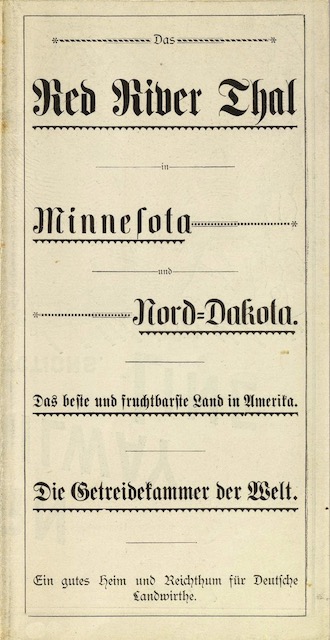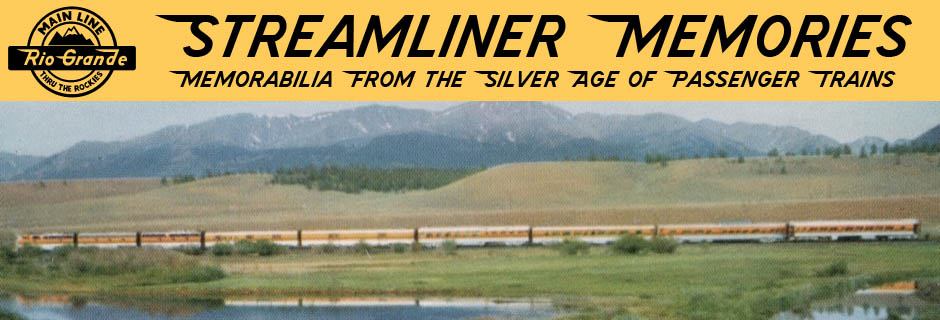It’s 1892, and the St. Paul, Minneapolis & Manitoba Railway has changed its name to the Great Northern, signifying a completely different set of ambitions. But James J. Hill has not forgotten the importance of the Red River Valley, which grew a large share of the nation’s wheat crop, much of which was carried by Manitoba/Great Northern trains to Minneapolis and Duluth. This brochure is an effort to attract settlers to some of the still-unclaimed lands in the valley.
 Click image to download a 13.2-MB PDF of this brochure, which is from the David Rumsey map collection.
Click image to download a 13.2-MB PDF of this brochure, which is from the David Rumsey map collection.
The settlers it is trying to attract are from Germany, which means the brochure is nearly all in German. Moreover, it is in blackletter, the ornate and hard-to-read (for someone used to today’s Roman type) typeface that was commonly used in the Germanic countries before World War II. (Germany switched to Roman in 1941 because Hitler thought blackletter had been influenced by Jews.)
Aside from the words “Red River,” English is found mainly on the maps, the larger of which notes that Montana was “all free land.” The map also shows that, at the time of publication, the Great Northern had crossed the Rocky Mountains to Flathead Lake (now Kalispell) and was under construction to Seattle. That construction would be completed in January 1893.
Attracting settlers played a key role in the growth of the Great Northern. While the Northern Pacific and other land grant railroads were expected to sell the land to pay for construction (though rarely did because there wasn’t a market for most of it), Great Northern’s goal was to get settlers on the land who would pay for the shipment of goods and crops they produced. GN did have land grants from the St. Paul & Pacific and other constituent railroads, but GN investors paid fair market value for those railroads and land grants. By successfully finding settlers to farm land in Minnesota and North Dakota, GN was able to finance construction of a line to Great Falls and later Seattle.
